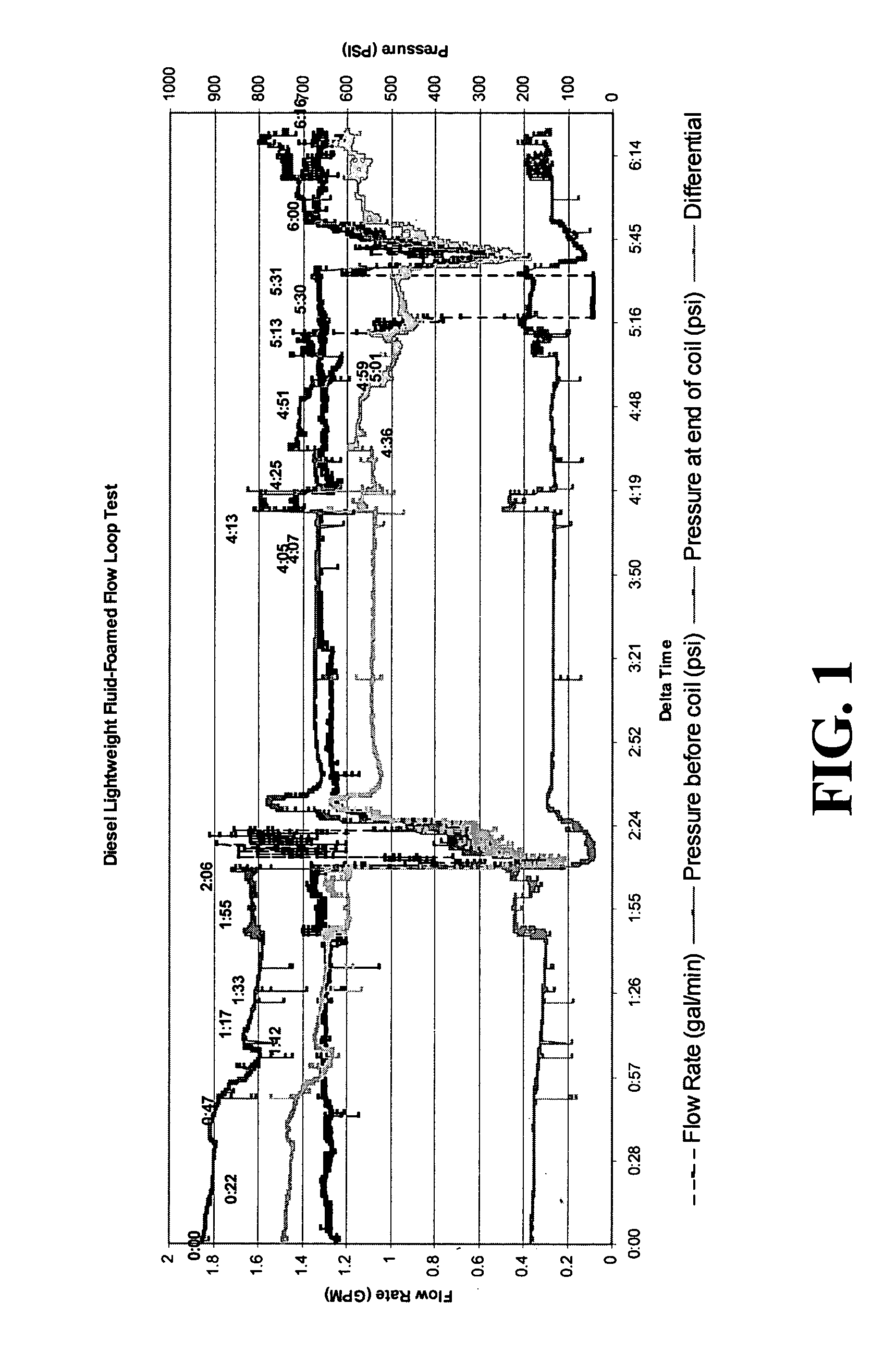Method for foaming a hydrocarbon drilling fluid and for producing light weight hydrocarbon fluids
- Summary
- Abstract
- Description
- Claims
- Application Information
AI Technical Summary
Benefits of technology
Problems solved by technology
Method used
Image
Examples
example 1
[0068] This example illustrates the preparation of an illustrative example of a diluted cross-linking agent of this invention, which is then used in all of the subsequent formulations.
[0069] A cross-linking solution was prepared by adding 90 wt % of monoethylene glycol and 10 wt. % of WEC HGA-65, a ferric cross-linking agent, available from Weatherford International.
example 2
[0070] This example illustrates the preparation and testing of an illustrative example of foaming composition of this invention for foaming an oil-based drilling fluid including a foaming agent, a gelling agent and a cross-linking agent.
[0071] To 100 mL of “Off Road” Red Diesel #2 high sulfur content, 0.2 vol. % of HGA 70, a phosphate ester hydrocarbon gelling agent available form Weatherford International, and 0.5 vol. % of the solution of Example 1 were added. The resulting solution was mixed for 1 minute on Hamilton Beach Mixer at the highest speed. This solution was found to generate a foam having a foam height of 150 mL as measured in a graduated cylinder and a half life of 2:40 minutes.
[0072] To the above solution was added 0.5 vol. % of DC-1250, a foaming agent available from Dow Corning, and the resulting solution was mixed for 1 minute on Hamilton Beach Mixer at the highest speed. The solution was found to generate a foam having a foam height of 170 mL and a half life of ...
example 3
[0076] This example illustrates the preparation and testing of another illustrative example of a foaming composition of this invention for foaming an oil-based drilling fluid.
[0077] To 100 mL “OffRoad” Red Diesel #2, 0.2 vol. % HGA 70, a phosphate ester gelling agent available from Weatherford International, and 0.5 vol. % of the cross-linking solution of Example 1 were added. The solution was mixed for 1 minute on Hamilton Beach Mixer at the highest speed. To this solution was added 0.5 vol. % Zonyl FSG, a foaming agent available from DuPont with mixing for 1 minute on Hamilton Beach Mixer at the highest speed. The foamed solution had a foam height of 170 mL and a half life of 6:00 minutes.
[0078] To this solution was added 10 vol. % of crude oil as a contaminant with mixing for 1 minute on Hamilton Beach Mixer at the highest speed to produce a foam having a foam height of 180 mL with a half life of 2:00 minutes.
[0079] From Examples 2 and 3, the addition of crude oil to the drill...
PUM
 Login to View More
Login to View More Abstract
Description
Claims
Application Information
 Login to View More
Login to View More - R&D
- Intellectual Property
- Life Sciences
- Materials
- Tech Scout
- Unparalleled Data Quality
- Higher Quality Content
- 60% Fewer Hallucinations
Browse by: Latest US Patents, China's latest patents, Technical Efficacy Thesaurus, Application Domain, Technology Topic, Popular Technical Reports.
© 2025 PatSnap. All rights reserved.Legal|Privacy policy|Modern Slavery Act Transparency Statement|Sitemap|About US| Contact US: help@patsnap.com

